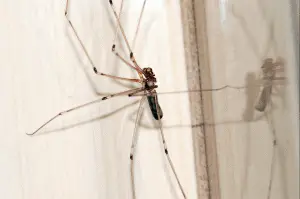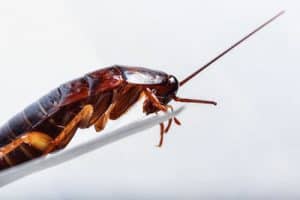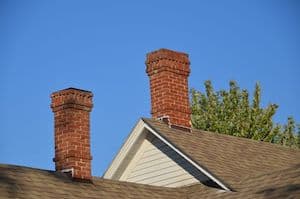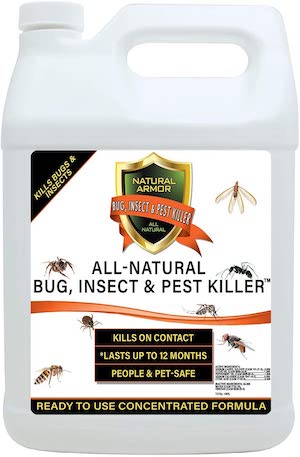How To Locate Where Bugs Are Coming From
When the weather starts to get colder, it means that you are going to spend more and more time inside instead of outside. This is a normal response for us humans who naturally want to stay warm and cozy rather than enduring harsher elements.
Unfortunately, we aren’t the only ones who have had this idea and respond to this instinct. Pests, including ants, gnats, termites, spiders, cockroaches and other home invaders, don’t want to spend time in unpleasant living environments any more than we do, so they are deciding to seek shelter elsewhere. Specifically in our places of business, storage facilities, and even our homes.

Spider coming in through the window
No matter how airtight you think your place of residence is, pests will always find a way in. But how are they finding their way inside so easily and how do we find out where these bugs are coming from?
Some of the easiest points of access for pests are through:
- Siding
- Portable Loads
- Roof Vents
- Main Entry Points
- Wall Passages
- Crawl Spaces
- Exterior Foundation
- Exhaust Fans & Dryer Vents
- Windows
- Chimney Caps
Most common bugs get in your house:
How To Find Where Bugs Come From At Home
1. Siding
One of the main places that bugs can use as a passageway is your siding. Gaps in siding are not always visible to the naked eye and are rarely able to be found unless they are sought out
Siding is also a natural draw for insects like flies because vinyl siding is able to collect the build-up of sugar particles that are airborne from trees, brush or other plants that are nearby.
Wood, brick and other materials aren’t able to collect these particles the same way, so this type of siding is the main culprit for the gathering of flies, stink bugs, spiders and other pests.
2. Portable Loads
We are always coming and going from where we live, and we are usually carrying something with us. More often than we think, these loads can be carrying unwanted visitors that hitch a ride, and begin to make your house their new home.
Small house plants that you have just purchased, firewood, toys from the thrift store and other armloads of seemingly natural products can all bring pests directly into your home.
3. Roof Vents
Another popular place for pests to get into places where they shouldn’t are your roof vents. Damaged junctures between adjoining rooflines create easy access for yellow jackets and wasps, so you want to be sure to check these regularly to avoid regular intrusions.
4. Main Entry Points
While this one might seem somewhat obvious, more critters than you think are able to sneak past your main points of entry without being noticed. Over the years, frames can warp leaving your thresholds vulnerable. Your front door, back door, and even your garage door are all easy points of access and should be treated to keep out any unwanted company.
As a general rule of thumb, if you can see light peeking through the cracks of one of these entry points, it means that pests will be able to get in. Door sweeps are an easy way to help close these gaps and keep bugs out.
5. Wall Passages
Bugs are crafty and are even able to find access to your home through your walls using ventilation or plumbing passages that aren’t properly sealed off.
In order to avoid this, you want to make sure that these passages are sealed off completely using a double sealant and even caulking the inside and outside of where these passages are located.

6. Crawl Spaces
Crawl space openings can be another point of entry for roaches and other pests. If you have a floor above any crawl space, you could potentially have insects coming in from that area.
If the crawl space is to tight for you to get into and make adjustments to, you may need to hire a professional to treat the space for you.
7. Exterior Foundation
A lot of times, bugs and pests are just waiting on the exterior of your home looking for a way in, and they don’t always have to wait too long.
The exterior of your home is vulnerable when proper care has been neglected and cracks or holes are present. It’s also a problem if your soil line is above your foundation because this means that insects have been given a “boost” from the ground to some potential breaches in the exterior of your home.
If this is the case, take some time to patch any cracks or holes on the outside of your property, and make sure that a few inches of your foundation are visible on top of the soil line.
Another way to protect the exterior of your residence is to make sure that mulch is kept away from the foundation, and that any overgrown limbs or shrubbery is trimmed down and kept a good distance away from the perimeter of your house.
8. Exhaust Fans & Dryer Vents
The last thing you want is to be cooking, doing laundry or going to the restroom when you have an unpleasant encounter with an insect.
Your bathroom, kitchen or laundry room are all potential access points for spiders and other pests because of the exhaust fans and vents that are already installed for proper ventilation.
You will want to do a thorough inspection of all of your vent dampers to make sure that none of them are accidentally damaged or open so that you can avoid these kinds of encounters.
9. Windows
Insects are able to use any openings or cracks in your windows to infiltrate your house, and the crack doesn’t have to be very wide for them to do it.
It’s crucial that even the tiniest of gaps between your windows and their jambs should be thoroughly treated with caulk.
You will want to inspect which windows are causing you the most potential problems, clean the area, apply the caulk, and then remove any access caulk to give your window a smooth and natural finish.
Doing this will keep bugs out, but as an added benefit, the overall energy costs at your property will go down significantly.
10. Chimney Caps
Most families think that the only person who should come down their chimney is Santa Clause, but insects may not agree.
Your chimney can be a very easy way for an insect to find a warm place to survive the winter. Because of this, It’s a good idea to have your chimney cap inspected once a year.
If you don’t have a chimney cap, it’s a good idea to consider installing one because it can also keep out other critters like squirrels, raccoons, or birds.
These larger critters are also able to be carriers for smaller insects, so a chimney cap is one of the best precautions you can take against pest infiltrations.
Using a Natural Bug and Insect Killer to Kill Bugs that are Trying to get in Your House
A great solution to keep bugs at bay is a natural bug and insect killer. A Natural Bug, Insect & Pest Killer can help control these types of insects for up to 12 months. You also want something that can be used both inside and outside.
How To Find Where Bugs Come From At Work
While it’s understandable that insects may find their way into a home, one doesn’t usually think they will find bugs in a place of business.
However, insects are still able to do so despite how clean and secure an office might look and feel.
But how is this possible? Similarly with homes, insects are able to get in through:
1. The Maid or Cleaning Service
Surprisingly, the maid or cleaning service may be somewhat responsible for some of the bugs that have gotten into your home or business.
Mop heads that aren’t fully dry can be the perfect place for bugs to hide out, especially fruit flies. It’s a good idea to make sure that these mop heads are being changed on a regular basis, and are being hung up to dry properly.
2. The Garbage
If a business doesn’t have a reliable garbage system, it can be a huge attraction for insects. If employees or management are lazy with their waste by leaving their food in the fridge too long, or by not emptying their office garbage cans, there can be big problems to solve further down the line.
It’s crucial that garbage cans have a lid that is closable, and that trash is taken out routinely so that insects don’t have anything to be drawn to. Thicker garbage bags that are scented will also detract unwanted visitors.
It doesn’t stop there though. Dumpsters also need to be cleaned and emptied on a regular basis to avoid insect infestations.
Managing trash properly will keep critters at bay, and your place of work clean and tidy.
3. Unsealed Cracks
Even though office buildings seem unpenetrable from the outside for insects, this is most definitely not the case.
As with any other building, there can be holes and cracks that are left untreated, creating an access point that is impossible to resist for pests.
Take special precautions to cover any entry points on pipes and caulking cracks along the entire perimeter of the office building, and calling a professional if needed.
Weatherstripping your doors and windows will also prevent insects from getting through the more obvious openings of your place of work.
Insects will always be trying to find their way into your home, but we will always have ways to outsmart them.
If you are having problems with unwanted pests in your home or place of business, don’t wait another minute and contact your local exterminator today!


